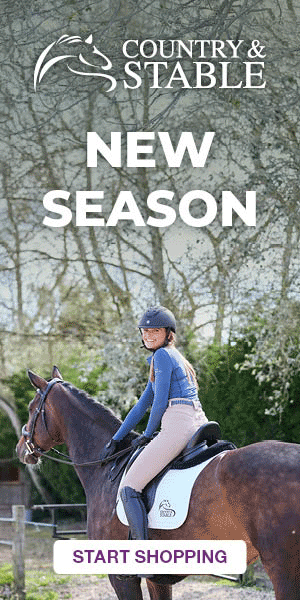Why Ex-Polo Ponies Are the Perfect Horses for New Riders
Ex-polo ponies are ideal for new riders because they’re well-trained, calm, and used to working closely with humans. Their experience with quick commands and steady temperament helps beginners build confidence safely. They’re not fresh horses but reliable partners ready for a slower pace and gentle guidance.
Common Questions from New Riders About Ex-Polo Ponies
Are ex-polo ponies suitable for beginners?
Yes, ex-polo ponies suit beginners well because they’re trained to respond calmly to riders’ cues. Their steady nature helps new riders gain confidence without feeling overwhelmed. These horses know commands clearly and have a gentle side after retiring from fast-paced polo work.
What makes them different from other horses?
Ex-polo ponies are unique due to their training and experience. They’ve been conditioned for quick reactions and close communication with riders, which means they listen carefully. Unlike some young or green horses, they’re steady, used to noise, and less likely to spook.
Where can I find ex-polo ponies in the UK?
You can find ex-polo ponies through local polo clubs, rehoming schemes, and specialist equine websites. Polo clubs often help rehome retired ponies, while sites like HorseQuest or regional riding schools may have listings. Word of mouth within the polo community also helps.
What Are Ex-Polo Ponies?
Definition and background
Ex-polo ponies are horses that have retired from playing polo. They’ve usually spent several years competing at various levels before moving on to less demanding work. After retirement, they’re often rehomed for riding, lessons, or light hacking, offering a calmer lifestyle but retaining their athletic ability.
Typical age and breeds
Most ex-polo ponies retire between 10 and 15 years old. They are commonly Thoroughbred crosses, especially Argentine Thoroughbreds, known for speed and stamina. Some may also be British native breeds or crossbreeds. Their size varies but typically ranges from 15 to 16 hands, making them suitable for many riders.
Training and temperament
Ex-polo ponies have solid training in responsiveness and control. They’re used to quick commands, leg pressure, and voice cues, which makes them attentive riders. Their temperament tends to be calm off the field, as they adjust to slower work. They are generally reliable and sensible for new riders willing to work with them patiently.
Why Ex-Polo Ponies Suit New Riders
Calm, responsive nature
Ex-polo ponies are calm and quick to respond, making them perfect for beginners. Their years of training teach them to listen closely to riders’ cues. This steady nature helps new riders feel safe and in control, reducing fear and boosting confidence during rides.
Used to human contact and commands
These ponies are familiar with constant human handling and clear commands. Polo requires horses to react instantly to leg, rein, and voice signals. This experience means they adjust well to new riders, understanding what’s asked without hesitation.
Adaptability to slower-paced work
Though trained for fast polo matches, ex-polo ponies adapt well to gentler riding. Once retired, they settle into slower routines like hacking or lessons. This makes them ideal for riders wanting relaxed, consistent horses without losing athletic ability.
Common Myths About Ex-Polo Ponies
Myth: They’re too hot or difficult
Ex-polo ponies are often calmer than people expect. While they can be quick on the field, retirement usually softens their energy. Most become steady and manageable, especially when handled by patient riders. They’re not overly nervous or hard to control for new riders willing to take their time.
Myth: They’re old and unhealthy
Many ex-polo ponies retire in their early to mid-teens, still sound and healthy. They receive good care during and after their polo careers. With proper health checks and regular vet visits, they can remain fit for riding and lessons for years.
Myth: Only for polo or fast riding
Ex-polo ponies are versatile and suitable for more than just polo. After retirement, they adapt to a range of activities like hacking, dressage, or beginner lessons. Their training means they respond well to slower work and different riding styles.
Caring for Your Ex-Polo Pony
Diet and exercise adjustments
Ex-polo ponies need diet changes after retirement to avoid weight gain. They often require less high-energy feed than during their polo careers. Regular, gentle exercise keeps them fit and mentally engaged without overexertion.
Adjusting your pony’s diet and exercise is especially important during warmer months. (summer horse care advice) A balance of turnout, hacking, and light schooling helps maintain health while matching their slower lifestyle.
Health considerations as they age
Older ex-polo ponies may develop common age-related issues like arthritis or dental problems. Regular vet checks and proper farriery prevent discomfort.
Regular dental care is crucial for older ponies to stay comfortable and healthy. (horse dental health tips) Monitoring their condition closely ensures early treatment. Adjusting workload as they age keeps them comfortable and happy for years to come.
Building trust with a new rider
Trust takes time when pairing an ex-polo pony with a beginner. These ponies respond well to consistent, calm handling. Teaching your pony to stand calmly for grooming builds trust and improves handling. (training your horse to stand for grooming) Gentle,
patient riders build confidence by setting clear, kind boundaries. Regular time together helps the pony understand and accept the rider’s pace.
How to Find and Buy Ex-Polo Ponies in the UK
Polo clubs and rehoming programmes
Local polo clubs often rehome retired ponies directly. They know each horse’s history and can advise on temperament and suitability. Some clubs run rehoming schemes specifically to place ponies with new owners, making them a trustworthy source for beginners looking for ex-polo ponies.
Online marketplaces and auctions
Equestrian classifieds platforms and UK auction sites list ex-polo ponies for sale. These platforms let you filter by age, price, and location, making it easier to find the right match. Always research the seller, read reviews if available, and request clear, detailed information before arranging a visit.
What to look for in adverts
Focus on clear details about the pony’s age, health, and experience. Look for mentions of retraining time, behaviour with riders, and any health issues. Good adverts often include videos or photos showing the pony calmly ridden or handled.
Questions to Ask Before Buying
Health and injury history
Always ask for detailed health records, including past injuries. Knowing if the pony has ongoing issues or needed surgery helps avoid surprises. A recent vet check and clear vaccination history are also essential before buying.
Training level and transition period
Find out how long the pony has been out of polo and retrained. A pony recently retired might need more time to settle into slower work. Those retrained for beginner riding will be easier to handle and safer for new riders.
Behaviour and suitability for beginners
Ask about the pony’s behaviour with inexperienced riders. Check if they’re calm under pressure and patient during lessons. A pony that tolerates beginner mistakes and responds gently is the best choice.
Caring for Your Ex-Polo Pony
Diet and exercise adjustments
Ex-polo ponies need diet changes after retirement to avoid weight gain. They often require less high-energy feed than during their polo careers. Regular, gentle exercise keeps them fit and mentally engaged without overexertion. A balance of turnout, hacking, and light schooling helps maintain health while matching their slower lifestyle.
Health considerations as they age
Older ex-polo ponies may develop common age-related issues like arthritis or dental problems. Regular vet checks and proper farriery prevent discomfort. Monitoring their condition closely ensures early treatment. Adjusting workload as they age keeps them comfortable and happy for years to come.
Building trust with a new rider
Trust takes time when pairing an ex-polo pony with a beginner. These ponies respond well to consistent, calm handling. Gentle, patient riders build confidence by setting clear, kind boundaries. Regular time together helps the pony understand and accept the rider’s pace.
Final Thoughts
Summary of benefits for new riders
Ex-polo ponies offer new riders calmness, experience, and reliability. Their solid training means they listen carefully and adjust to slower work. They provide a safe platform to learn riding basics without the unpredictability of younger horses. Many come with years of handling, making them sensible partners for beginners.
Encouragement to consider ex-polo ponies
If you’re starting out, ex-polo ponies deserve a close look. They bring skills from their athletic past but settle well into quieter roles. Finding the right pony takes patience but can lead to a rewarding partnership built on respect and steady progress.
🐴 Frequently Asked Questions About Polo Ponies

Welcome to Sell Your Horse, a platform dedicated to connecting equestrians with each other, making horse buying and selling easier and more transparent. With a focus on technology and community-building. My mission is to help like-minded equestrians find the right connections, share knowledge, and build a trusted equine network.
Search The Blog
Recent Posts
- Why Ex-Polo Ponies Are the Perfect Horses for New Riders
- Electric vs. Non-Electric Horse Waterers: What UK Owners Need to Know
- The Complete Guide to Buying a Used Horse box
- Preparing Your Horse for Sale: Clean Stable, Clean Horse, and Clean Tack Matter
- Making the transition easier for your new horse
Search Popular Categories
ADVERTISE FOR FREE!
Find horses for sale nearby you. Share adverts with friends on social media. Browse horses for sale on the go. Advertise your horse for sale in minutes!
» ADD YOUR LISTING HERE






 Featured Listings
Featured Listings
 Adverts
Adverts
 Horses For Sale
Horses For Sale
 Tack & Equipment
Tack & Equipment
 Horseboxes & Trailers
Horseboxes & Trailers
 Equine Properties
Equine Properties
 4x4 Vehicles
4x4 Vehicles
 Horses For Loan
Horses For Loan
 Horses Wanted
Horses Wanted
 Stallions at Stud
Stallions at Stud
 Equine Services
Equine Services
 Riding Holidays
Riding Holidays

